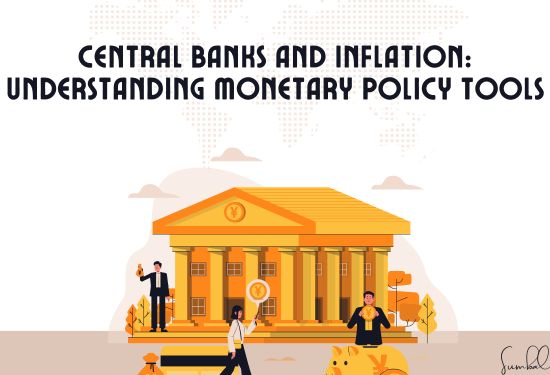Inflation is a slow but continuous increase in the price of things and services in the economy. Inflation takes a toll on purchasing power and economic stability. To tame inflation, the central banks come up with various policy instruments within monetary policy. These tools work towards achieving price stability and, hence, the availability of sustainable economic growth. This article will explore the principal objectives, tools and measures used in combating inflation by most of the world’s Central Banks, such as changes in interest rates, quantitative easing techniques and others.

Understanding Inflation
Inflation expands when demand outweighs supply or when the cost of production increases, including wages and materials. While moderate inflation expresses the growth of the economy, high inflation is bad news for financial stability as it undermines consumer confidence and discourages investment. To avoid such side effects, monetary policymakers at central banks are working to keep inflation within a specific zone, generally around 2% per annum in most developed countries.
Key Tools of Monetary Policy
- Adjusting Interest Rates
The key way through which central banks strive to tame inflation is through manipulation of the policy or benchmark interest rate.
- How It Works:
Inflation is high, and the central bank now readjusts the interest rates to make borrowing costly and saving beneficial. This results in lower expenditure by consumers and businesses, hence slowing down the pace of economic activities and lowering cost-push inflation. On the other hand, during low inflation, or even deflation, the central banks move to cut rates to encourage borrowing and spending. - Real-World Example:
The US Federal Reserve hiked interest rates several times in 2022 due to inflation hitting its highest point in 40 years. These measures are expected to reduce consumer demand and thereby bring stability to the prices.

- Quantitative Easing (QE) and Tightening (QT)
Central banks may affect the amount of money in the economy by using quantitative easing and tightening.
- Quantitative Easing:
For instance, when inflation is low but growth slows down, a central bank buys government securities or other forms of securities to pump the economy. It boosts borrowing, investing or spending in the economy. - Quantitative Tightening:
To tame high inflation, central banks invert and sell securities thus reducing circulation of money in a bid to curb demand pull inflation. - Example of QE:
During the credit crunch of 2008, major central banks of the world used QE to regain the stability of the financial markets for the purpose of economic recovery.
- Open Market Operations (OMO)
Open market operations (OMO) involve purchasing or disposing of government securities on the open market in order to influence the money stock. While the selling of securities in the market decreases liquidity and helps control inflation, buying securities increases liquidity and expands business activities. - Reserve Requirements
Central banks may force the commercial banks to hold certain reserve ratios, meaning that hoping to lend such money is impossible. The central bank sets a higher reserve ratio to prevent high inflation and lowers it to enhance business and consumer flow.

Problems in Implementing Monetary Policy
Inflation control is a sensitive proposition. If the central bank increases the interest rate to a certain level, it can lead to a recession. In contrast, if it takes a long time before increasing the interest rate it can lead to the inflation rate escalating to a very high level. Furthermore, factors like a global supply chain or geopolitical considerations can also make work harder for central banks.

Crafting Your Child's Education Legacy

How to Find Your Perfect Mortgage Rate

A Tale of Iwo Cities in the Crypto Market: Who Will Win, XRP or Bitcoin?

Enhancing Personal Financial Wisdom Through Market Volatility

How Fintech Companies Are Revolutionizing Traditional Banking

Investment Horizons for the Coming Decade

Legally Boost Your Money’s Value
